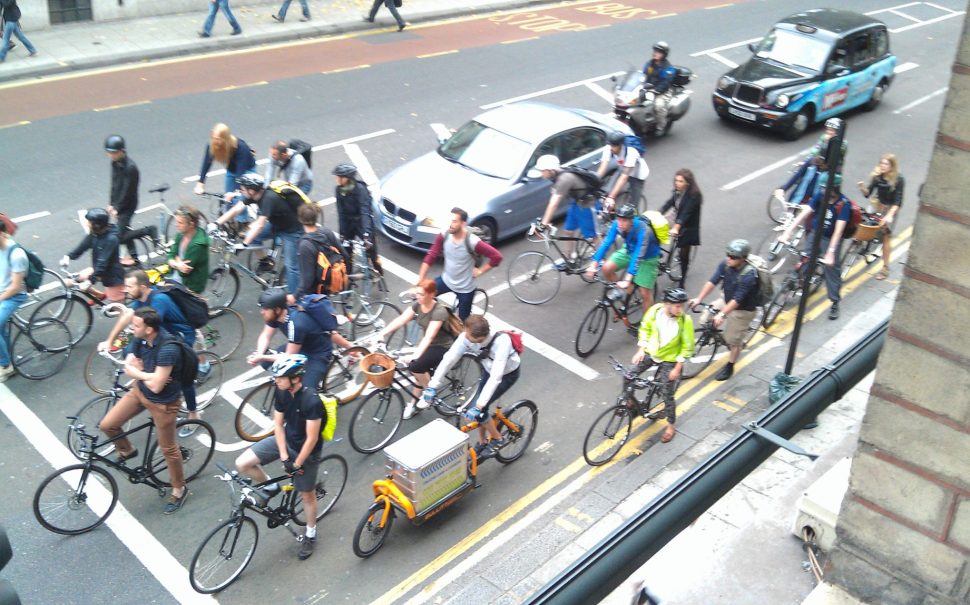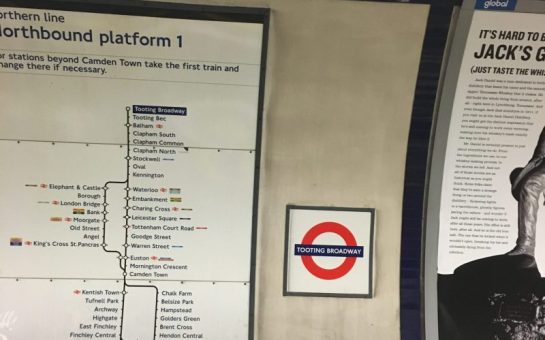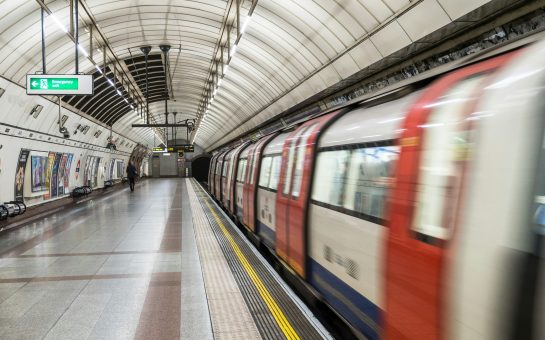Despite the introduction of a Cycle Superhighway, a junction in Tooting is the most dangerous in the capital for cyclists, the London Cycling Campaign revealed.
Despite the installation of wand-protected Cycle SuperHighway CS7, the junction on Upper Tooting Road remains a hazardous intersection for cyclists, where Ansell Road, Derinton Road, Price Close and Lessingham Avenue meet, according to November’s report.
Around 3,000 cycling journeys are made on CS7 daily, but side streets are heavily used as cut-through routes for drivers, with many vehicles turning in and out of them, resulting in 11 serious injuries in this area alone.
Celia Duncan, Wandsworth Cycling Campaign Coordinator, said: “What I found amazing standing at that junction was drivers coming from the side roads in a hurry, pushing out into the cycle lane.
“I think one of the issues with CS7 is wands being knocked over which need to be maintained.
“We’ve seen bin lorries systematically driving over them. Sometimes the cycle lanes get very flooded or they get leaves and the leaves aren’t cleared.
“One thing I find really problematic is where the cycle lane is completely blocked by a parked vehicle, so you’re on a cycle lane and then you have to get out into the traffic to go around the vehicle.”
As a cyclist herself Duncan feels that the biggest threat to cyclists at busy areas like the Junction at Upper Tooting Road is unsafe driving.
Duncan added: “It’s not just the volume of traffic trying to get across, it’s that they’re in a hurry.
“What was really noticeable is how impatient drivers were at that junction at 8:30 in the morning.”
The junction is part of a wider trend in the capital, as serious cycling collisions in London increased by a third in five years, according to Transport for London’s (TfL) road safety data.
While there has been no noticeable trend in cycling fatalities between 2017–2022, serious cycling collisions have been on the rise, reaching their highest point in 2022 with 1,020 serious casualties.
Fatal and Serious Cycling Collisions in Greater London between 2017 and 2022
In 2016, Mayor of London, Sadiq Khan, promised to invest £770 million into cycling infrastructure to rival Denmark and The Netherlands as a cycling-friendly city.
While some are quick to blame bike lanes outright, a 2020 study into cycling Injury Risk in London and the Impacts of cycling infrastructure showed that protected bike lanes reduce the odds of injury by 40-65%.
The study, conducted by Professor Rachel Aldred and Thomas Adams of TfL, also revealed that kerb separated cycle infrastructure reduced injury odds by 40% compared to no infrastructure and stepped tracks were even more protective, reducing injury odds by 65%.
However, the study found that advisory lanes increased injury odds by 34% and mandatory painted lanes (which motor vehicles are legally permitted to enter) increased injury odds by over 30%.
The apparent danger of advisory and mandatory cycle lanes represents a challenge for cycling campaigners like Duncan.
She said: “We’re always in a tricky position of — do we oppose something because it’s not great or do we go ‘well, you know, anything’s better than nothing?’
“Those are some issues, and obviously, we’ll always want the best infrastructure that you can fit.”
In July 2020, Department for Transport released their Local Transport Note — a manual for best practise in cycling infrastructure design.
One of the report’s key principles claims: “Cyclists must be physically separated and protected from high volume motor traffic, both at junctions and on the stretches of road between them.”
However, the report also claims that: “Motor traffic is the main deterrent to cycling for many people with 62% of UK adults feeling that the roads are too unsafe for them to cycle on.”
For campaigners like Duncan more has to be done to filter side roads.
She said: “The much bigger win would be the council making low traffic neighbourhoods.
“I think that’s a much easier way of making things safer. It makes things much safer for people on the residential roads.”
A 2020 study into the Impacts of Low Traffic Neighbourhoods (LTN) in London found that inside LTN areas there was approximately a 70% reduction in absolute injury numbers and approximately a 70% reduction in risk per trip for walking, cycling and car travel alike.
Cycling in London has seen a significant increase with daily cycle trips across London have increased by 20% since 2019.
For cycling campaigners the end goal is finding alternatives to the “motor-normativity ingrained in us” through cycling and walking.
Featured image credit: Carlton Reid via Flickr under CC BY 2.0 licence





